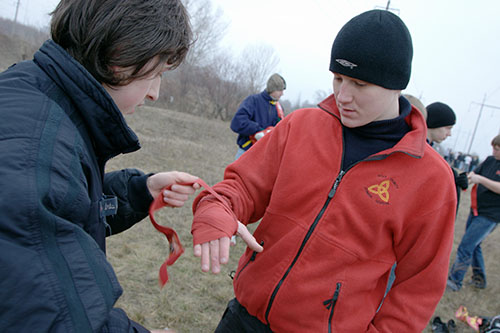Share
World Press Photo Eliminates 20 Percent of Images for Manipulation
Along with the announcement of the World Press Photo winners, TIME reported that 20 percent of the images that reached the second-to-last round of...

Along with the announcement of the World Press Photo winners, TIME reported that 20 percent of the images that reached the second-to-last round of judging were disqualified for “excessive post-processing.” Particularly problematic was the sports category. Last year, James Estrin reported in the LENS blog that 8 percent of the finalists’ images were disqualified for manipulation.

Stepan Rudik’s 2010 3rd Place winning entry was disqualified for excessive burning that eliminated a foot in the background.
World Press Photo managing director Lars Boering told TIME, “It seems some photographers can’t resist the temptation to aesthetically enhance their images during post-processing either by removing small details to ‘clean up’ an image, or sometimes by excessive toning that constitutes a material change to the image. Both types of retouching clearly compromise the integrity of the image.”
World Press Photo has been the leader in addressing photo manipulation with frank discussion of the issue and a requirement for winners to submit RAW files dating back to 2010. In 2013 following controversy over Paul Hansen’s winning image, WPP hired forensic experts to make an assessment on the levels of processing. In 2014, they commissioned a report entitled “The Integrity of the Image” written by David Campbell. Among the findings was a general agreement that “excessive” processing was unacceptable in news imagery, but the industry has yet to more succinctly define what acceptable and excessive really mean. Campbell also argues that continuing to use darkroom analogies for digital photography is outmoded, and I agree.
Given that the detection of manipulation in 2014 and 2015 occurred in different rounds, it’s impossible to tell whether there has been an aggregate increase, but a few key issues remain:
- Did the jury subconsciously respond positively towards the manipulation – or more specifically, would the same images have made the cut without the manipulation?
- How can WPP provide visual guidance for acceptable manipulation? It would certainly be controversial, but the eliminated photographers should consider allowing WPP to publish their unprocessed/processed images as an educational contribution to the industry. This is the only way to have a substantive discussion of the issue with a governing body, photo editors and photographers participating.
- “Acceptable” processing is a moving target, but if World Press Photo wants to become a think tank of photography as Boering has stated, then it needs to do more than simply report on a percentage of disqualified images. It ought to help the industry move closer to a detailed description so that the disqualifications are more than an opaque decision where the jury is “the ultimate arbiter of these standards.”
The on-going discussion of manipulation shouldn’t detract from the wonderful work that deservedly won awards, but given that 1 in 5 images was disqualified, it’s clear that there is a wide divide on what is acceptable. We hope World Press Photo continues to lead the way on this issue.



